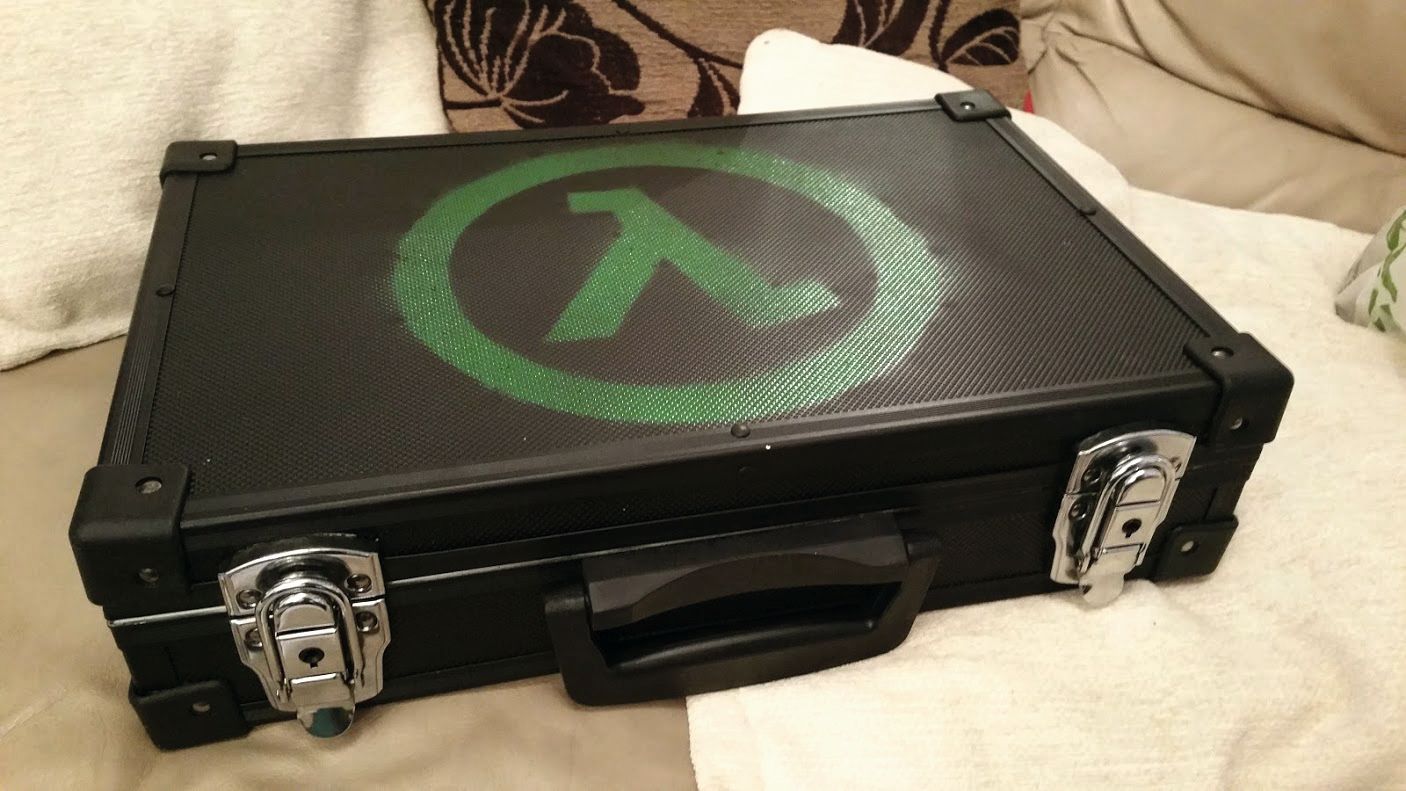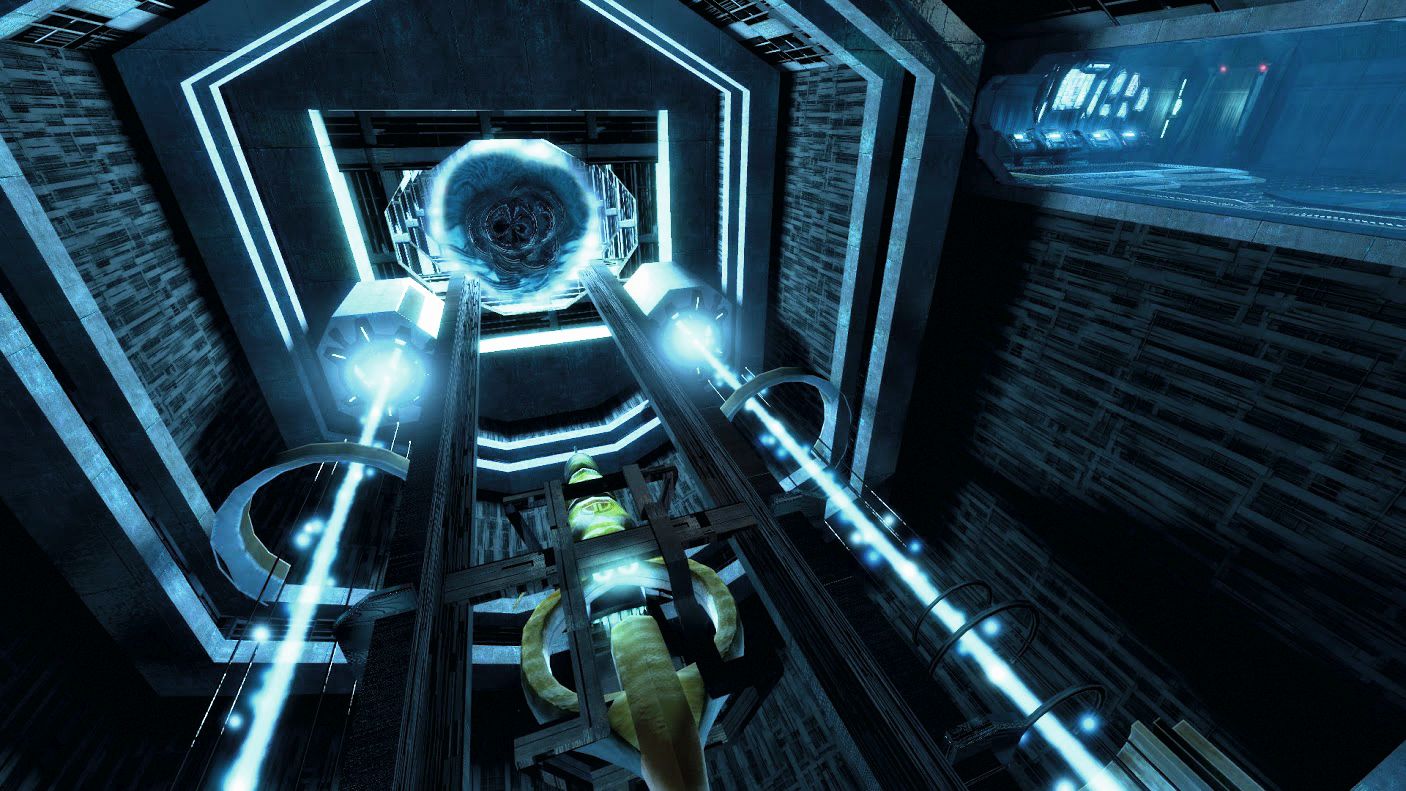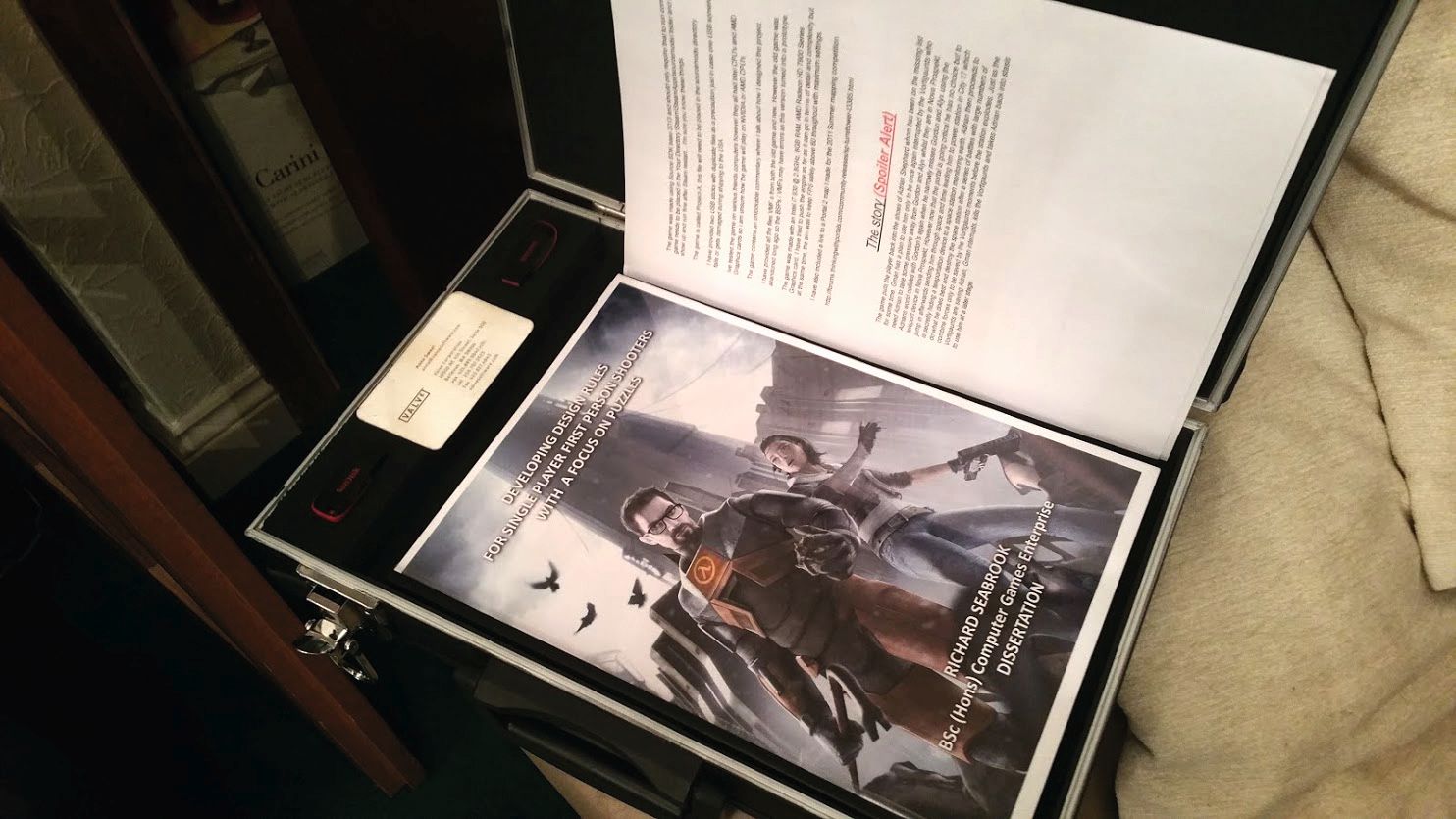One man's briefcase bid to work for Valve

As videogame developer origin stories go, Richard Seabrook’s is far from orthodox. After studying for a degree in Computers Games and Business at university, the Bournemouth-based Seabrook moved into QA testing as a means of breaking into the industry. When this didn’t work out, he created an unofficial sequel to Opposing Force—Gearbox’s Half-Life add-on—put it on a USB, wrote a CV and a covering letter, and packaged the lot along with his university dissertation into a briefcase emblazoned with the Half-Life logo. He then sent this to Gabe Newell in the hope of getting a job at Valve.
It definitely arrived. “It got signed-in by a guy called Diaz in the mailroom,” Seabrook says. “So if Diaz does read what you put out: I want answers, Diaz.”
His game, Prospekt, is out now on Steam, but not because Valve was charmed by his DIY endeavours. In fact, Valve hasn’t so much as mentioned the briefcase since receiving it, despite Seabrook’s continued efforts to elicit a response. Prospekt instead performed well on Greenlight, where it garnered enough interest to justify its recent full release on Steam.
“I watched that briefcase from the moment it got onto the UPS van,” Seabrook says. The contents of the package cost well over £100 and for an indie developer subsisting on a budget of minimum wage plus tips from a late night cocktail bar job, this was a big investment. “I tracked the flights, I tracked the vans and I tracked it all the way until it got to Bellevue,” he says. “So, yeah, it was like four o’clock in the morning and I was watching it go across the ocean. I thought: it’s nearly there, it’s nearly there!”
And then nothing. Emails, phone calls, letters and follow-ups were all ignored or passed down the line. “I had one extension number for someone there but apparently they left,” Seabrook recalls. “That answer phone message is probably still on that phone.”

At university, Valve’s Source engine was the basis of Seabrook’s 70-page dissertation, which explored puzzles in first-person shooter games, specifically those designed in the engine. Seabrook has long understood what makes Valve’s games tick, but has always appreciated the limited likelihood of success for budding developers trying to break into the industry. In 2011, he showcased his work online for the first time by way of a Valve-supported Portal map contest and received some encouraging feedback and distinguished plaudits as a result.
While he admits being nervous as to how the map would be received, a download count of over 2,000, and average ratings of four and a half stars, sparked a streak of confidence in Seabrook that forced him out of QA to work on what would eventually become known as Prospekt. He’d work long hours into the night serving drinks, spend a few more tinkering with his game, get a few hours’ sleep, then start the cycle again.
Keep up to date with the most important stories and the best deals, as picked by the PC Gamer team.
He’d work long hours into the night serving drinks, spend a few more tinkering with his game, get a few hours’ sleep, then start the cycle again.
Developing a pseudo sequel to 1999’s Opposing Force was a logical step as a debut project. He knew the Source engine inside out, he admired Valve, he wanted to work for them, and protagonist Adrian Shephard’s story is one that once captured many-a-Half-Life enthusiast’s heart, his own included.
Sticking to a “very strict” alternate timeline within the Half-Life universe allowed Seabrook to compensate for his limited production capacity as a one-man outfit. The plan, he says, was for this game to become not only his first professional project, but also a job application.
“The briefcase idea came about because I’d often seen things on YouTube of people sending stuff to Valve and they seemed to respond quite well to it,” Seabrook explains. “Also, I wanted to show them how much attention to detail I can pay to things and how I’m willing to go the extra mile.”

What Seabrook lacked in actual experience, he reckoned, he’d make up for with ingenuity and creative flair as demonstrated by the suitcase. So many hours, so much effort and sacrifice went into making Prospekt, it seems almost cruel to be left hanging in such a way. He’d prepared for failure—he knew this wasn’t a sure-fire way to land a job at Valve—but he hadn’t bargained for being simply ignored.
After being met with silence, Seabrook sought Greenlight approval for his game and was given the go-ahead just 72 hours after posting. Talks began with Valve and, although delighted and cautious not to push it, he gave the suitcase enquiry one last bash. Again, Valve was reticent.
What happened to the briefcase? To this day, nobody knows. When UPS confirmed the elusive Diaz had signed for the parcel, Seabrook was devastated. Yet in a roundabout way it’s landed him where he is today: head of his own development company, Seacorp Technologies, and having just released his first game.
"I have sat back when I’ve had a spare second and I’ve thought: would I do anything differently?” he says. “And I guess now that I’m here the answer is no, I wouldn’t. It’s got me to this stage. I’ve always wanted to start my own studio, it’s always something I’ve wanted to do, because I’ve got so many ideas that I want to create. I just didn’t realise it’d be so soon.”

